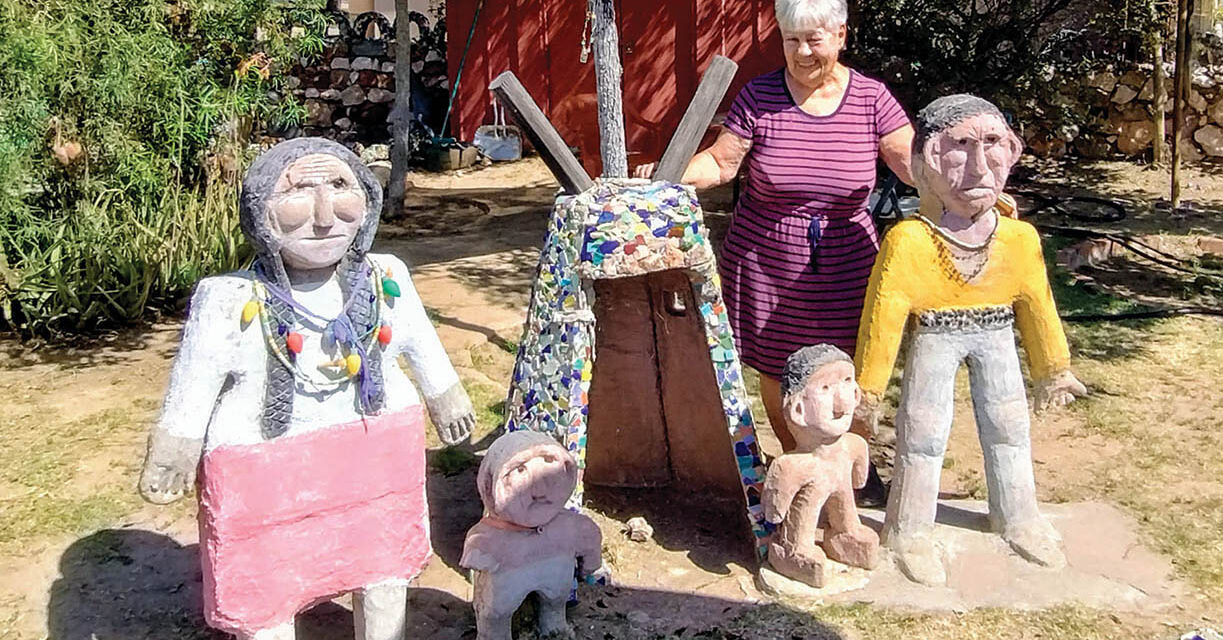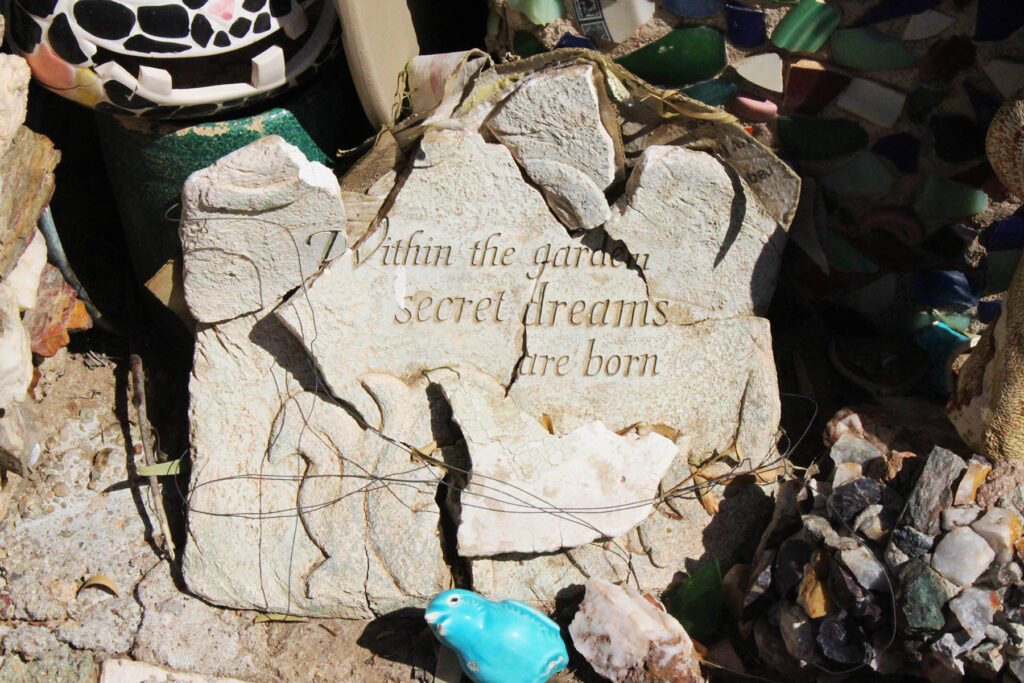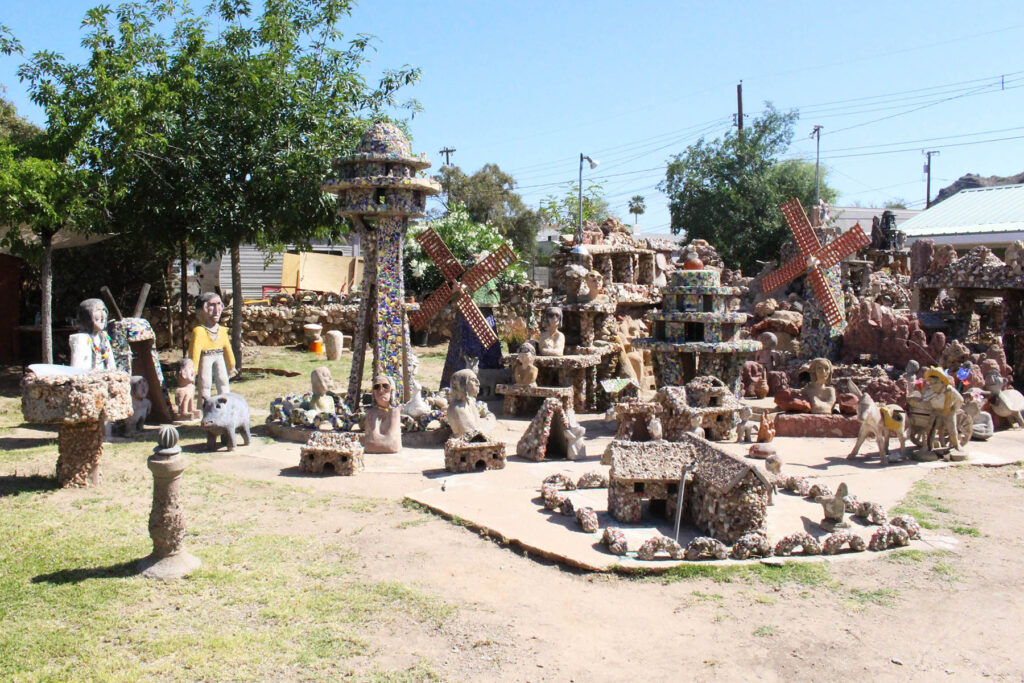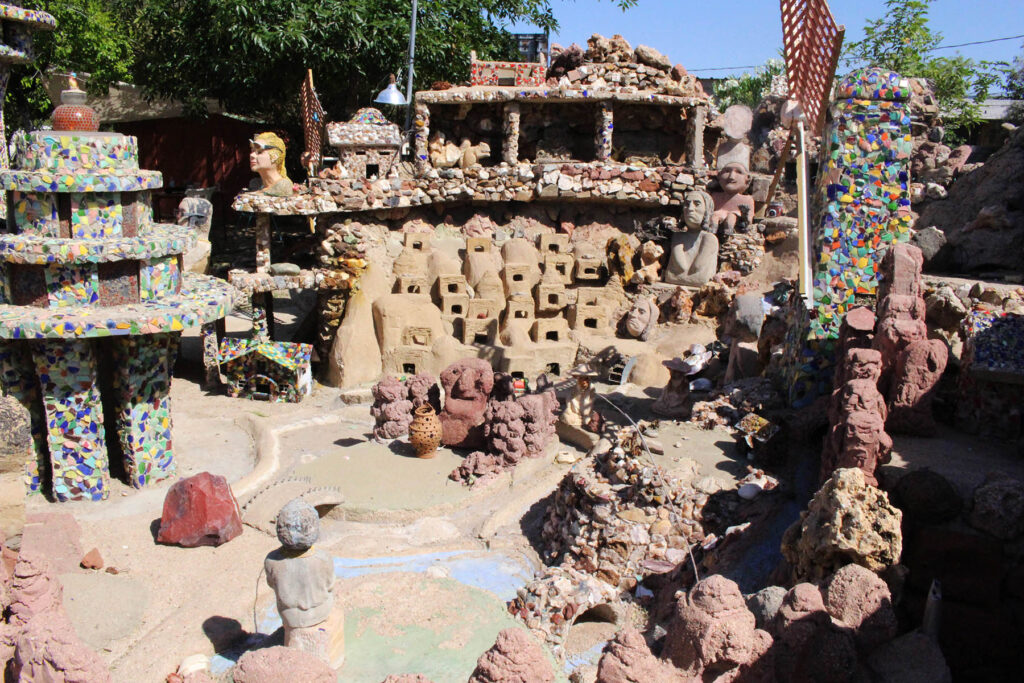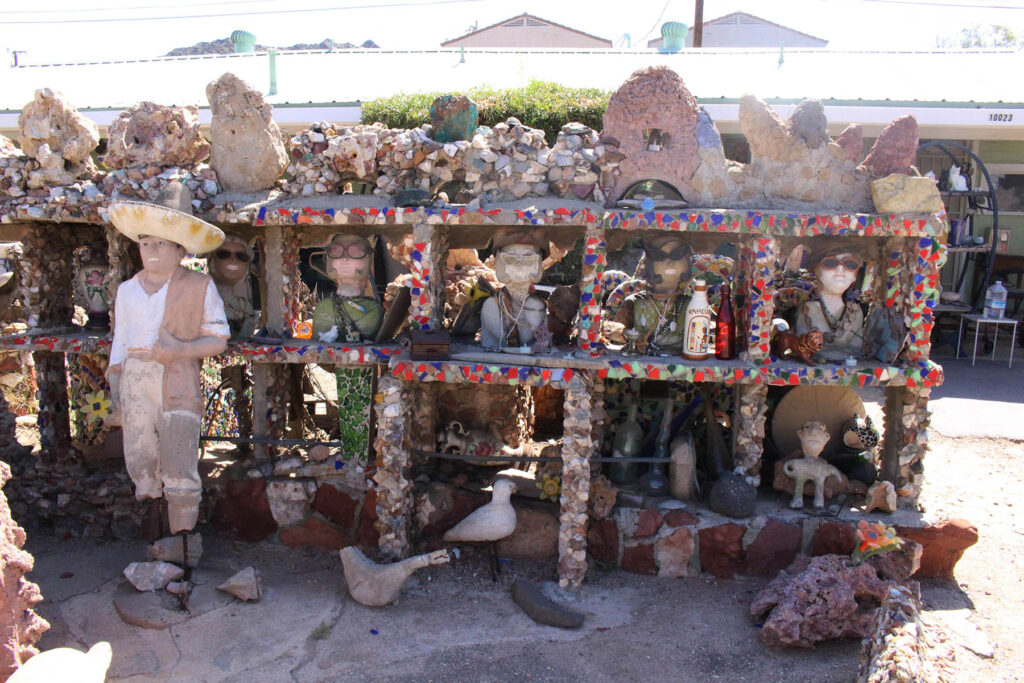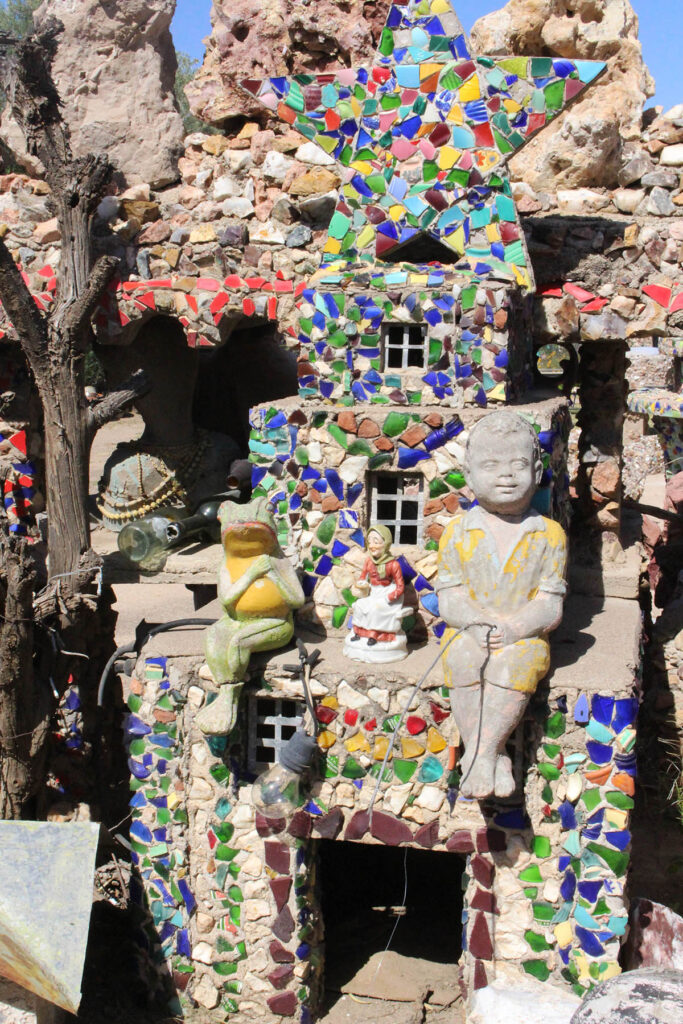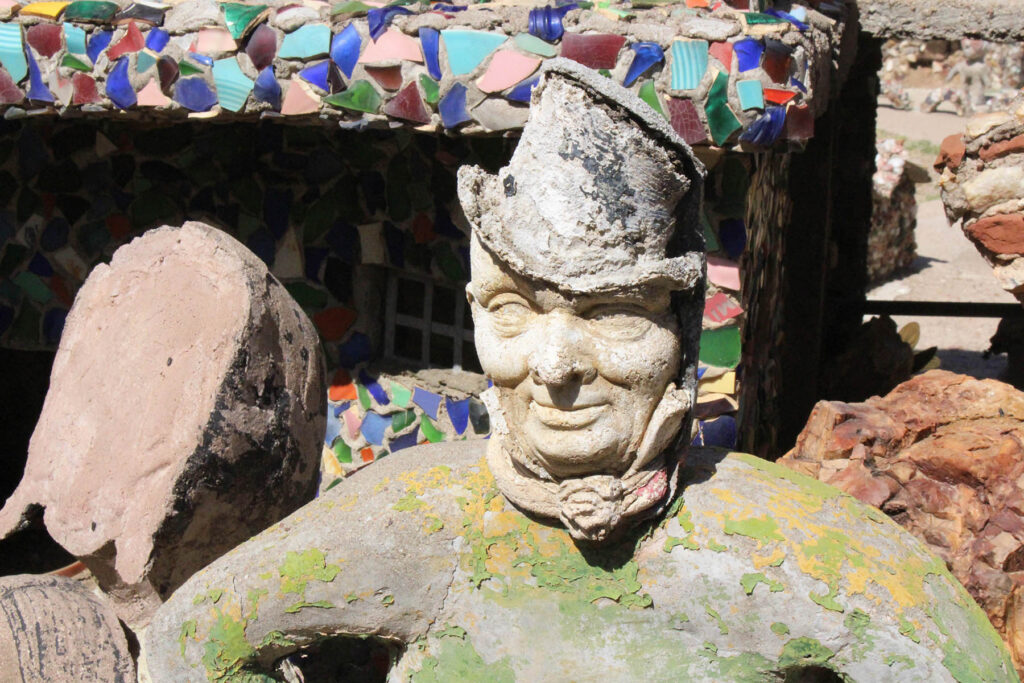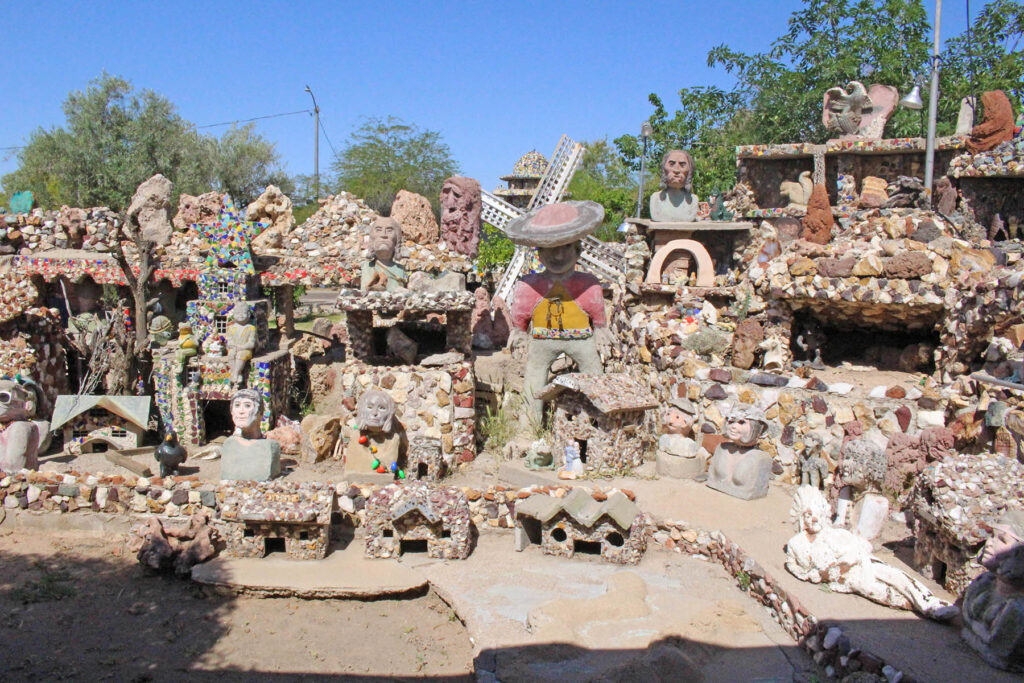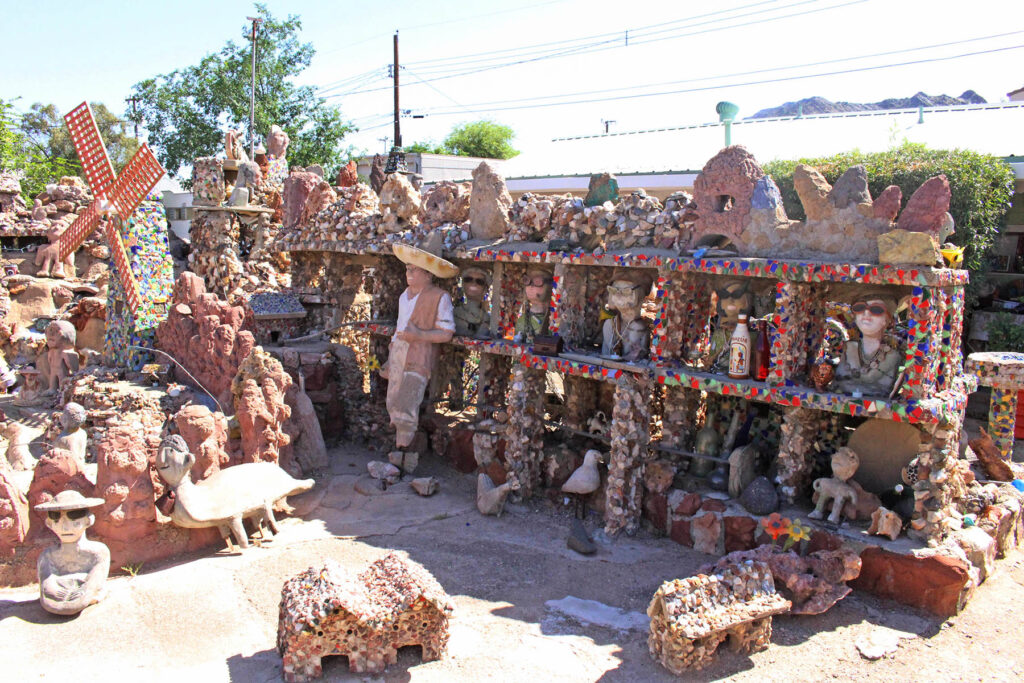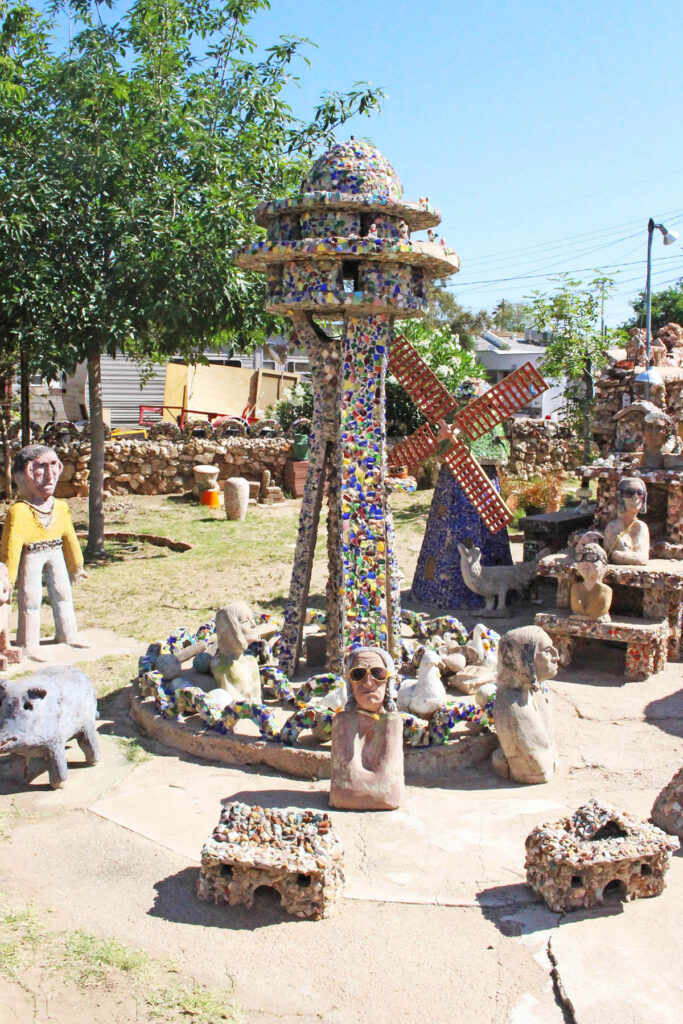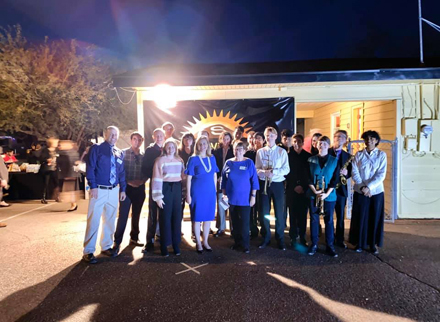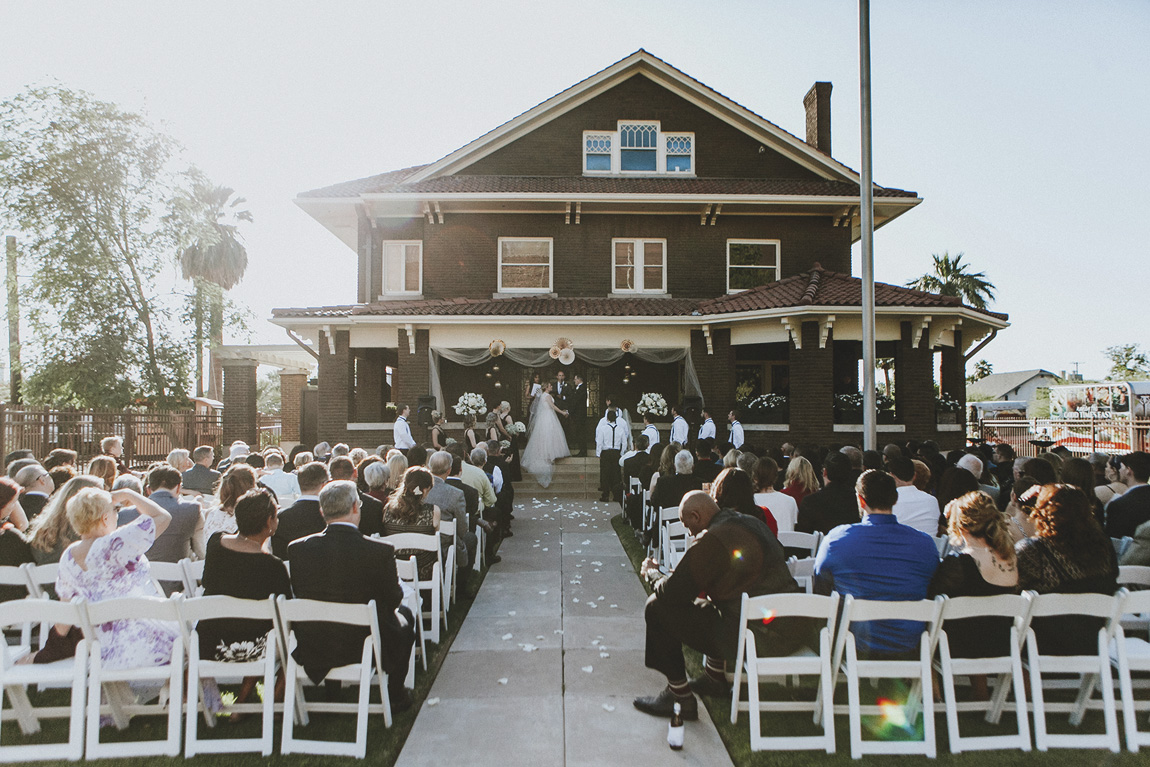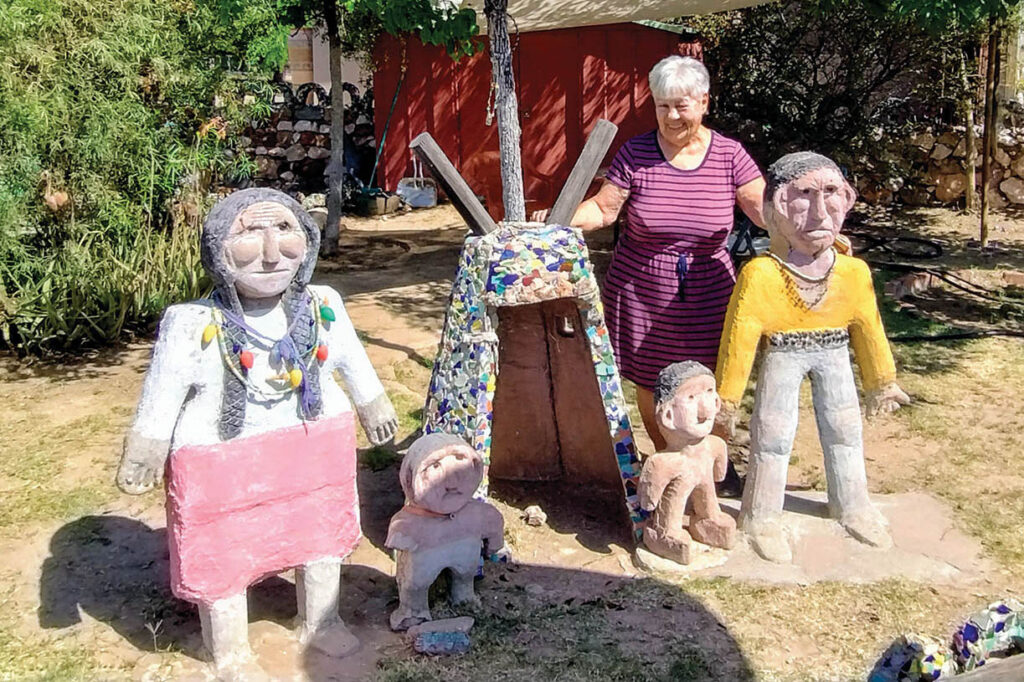
The story of why Grover Thompson created the whimsical Sunnyslope Rock Garden has largely been lost to time, but two area residents, Marion Blake and Julia Taggart, are working to preserve the artistic labor of love for current and future generations.
Grover Cleveland Thompson was born in Fossil, Oregon, on New Year’s Day 1892. The oldest of seven children, Thompson remained in Oregon for three decades. During that time, he married his wife Fay and had two children, Lucille and Cloydene, before moving to a suburb of Seattle, Washington, in the early 1930s. Then, in February 1941, tragedy struck — both Thompson’s wife and oldest daughter died, just five days apart from one another.
At various times in Thompson’s life, he identified himself as a farmer, a service man, a master mechanic, a heavy equipment operator and heavy construction engineer, and according to his 1942 World War II draft registration card, he lost the two center fingers on his right hand at some point. All of this history and more is what he brought to the Sunnyslope area when he and his second wife, Nancy, moved to Phoenix in the early 1950s. They settled in at 10023 N. 13th Place in March 1954, and Thompson got to work on what has become his lasting legacy.
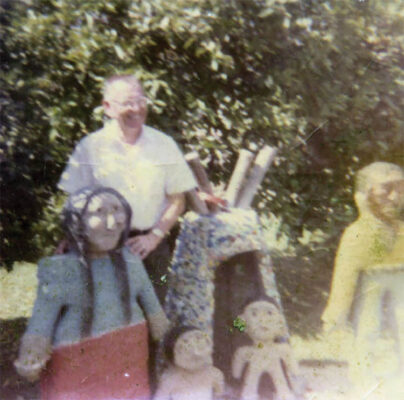
Said to be inspired by the Petersen Rock Garden in Thompson’s native Oregon, and similar in style and construction to the Watts Towers in Los Angeles and reminiscent of Louis Lee’s Phoenix garden, the folk art garden was painstakingly created over the course of 20-plus years out of concrete forms, rocks collected from around Arizona, seashells, tile, and even colorful shards of Fiestaware, blue Bromo-Seltzer bottles (provided by a neighbor who was a nurse), and dozens of other unique found objects.
The visionary environment depicts everything from the Seattle Space Needle, Dutch windmills and Native American cliff dwellings to dozens of quirky human forms – many of their faces created by pouring concrete into 1950s Halloween masks – along with dozens of arches, fountains, tables and other forms that themselves house creative figures.
Grover Thompson died Oct. 27, 1977, eight months after Nancy, and his artistic endeavor may well have been destroyed if not for an NYU art history student who happened to be visiting her parents in 1978.
Blake recalled, “When I saw this, oh my gosh! My parents had a little hideaway out in the desert, and while they were building it, they had stayed somewhere around here, and in the evening when they would take a walk, they happened to come by this place. When I came to visit them, they took me here, right from the airport. They said, ‘you have to see this.’ It was for sale, and I was in love with it! I mean, there was no question. If I could possibly afford it, I had to have it.”
From an artistic standpoint, Blake, who is a retired teacher, said, “[Thompson] was very sensitive to color and shape and form, even though he had no artistic training. He was in construction. So, he knew about vertical structures, he could make forms, he could cast the concrete – like those curved supports for the Space Needle – he had great skill to be able to do that.”
Beyond just the personal enjoyment that she derived from the property, from the get-go, she wanted to preserve the garden and hoped that others would recognize its value.
“It really meant a lot to me,” she tearfully reflected. “You know, it’s like a comma. It’s a small place, but in and of itself, it’s a jewel. And there are not a lot of places like this left.”
Blake began her efforts to obtain historic recognition of the garden in the mid-80s, and submitted an application to gain Phoenix historic status for the property in 1992, but the application was rejected by the Historic Preservation Office, mainly because the property was not yet 50 years old.
Now, with the help of Taggart, who is president at the Sunnyslope Historical Society and Museum, another push is being made for not only historic status, which Taggart explains will still not protect the garden from demolition should it change hands, but for a conservation easement.
In Phoenix, a conservation easement, which is tied directly to grant funding, usually ranges from 15 to 40 years, says Helana Ruter, a historic preservation officer with the city of Phoenix, and provides a greater level of oversight of modifications to historic buildings.
Ruter adds that the grants are typically geared towards exterior rehabilitation and maintenance of buildings, although the easement would be recorded on the property as a whole.
“This is an interesting one,” she said. “The significance lies more with the rock garden than the building on the property.”
The application is currently in review with the Historic Preservation office as they conduct a formal determination of eligibility, which should take about 30 days. If accepted, the application will then follow the public process, with neighborhood notification and a three- four-month long schedule of public meetings. While that process unfolds, residents are encouraged to show up at the Historic Preservation Commission meetings (the next one is June 17) or send a letter in support of preserving the Sunnyslope Rock Garden.
“It’s good to start this process ahead of time and make sure that the city knows what we value as well as let developers know what we value here in Phoenix and our communities – before they’re in jeopardy,” Taggart said. “We’re always making history, but sometimes we’re not preserving the history we have.”
Once the weather cools, Taggart hopes to schedule a public tour of the garden so that others can learn about its history. “It’s not just a beautiful art piece,” she said. “There is a memory to it.”
Blake added that the space is deserving of appreciation and preservation, “There’s something very, very precious about it. It’s important and it’s something that is unique.”
In the meantime, Thompson’s artistic endeavor continues to capture the hearts and imagination of Sunnyslope neighbors and out-of-town visitors alike, and if Blake and Taggart are successful, it will continue to do so for many more decades to come.

